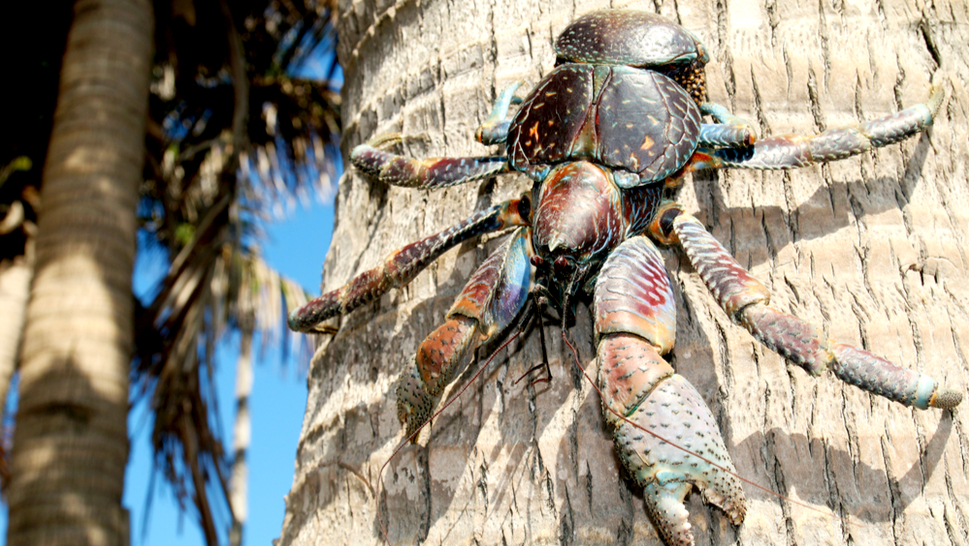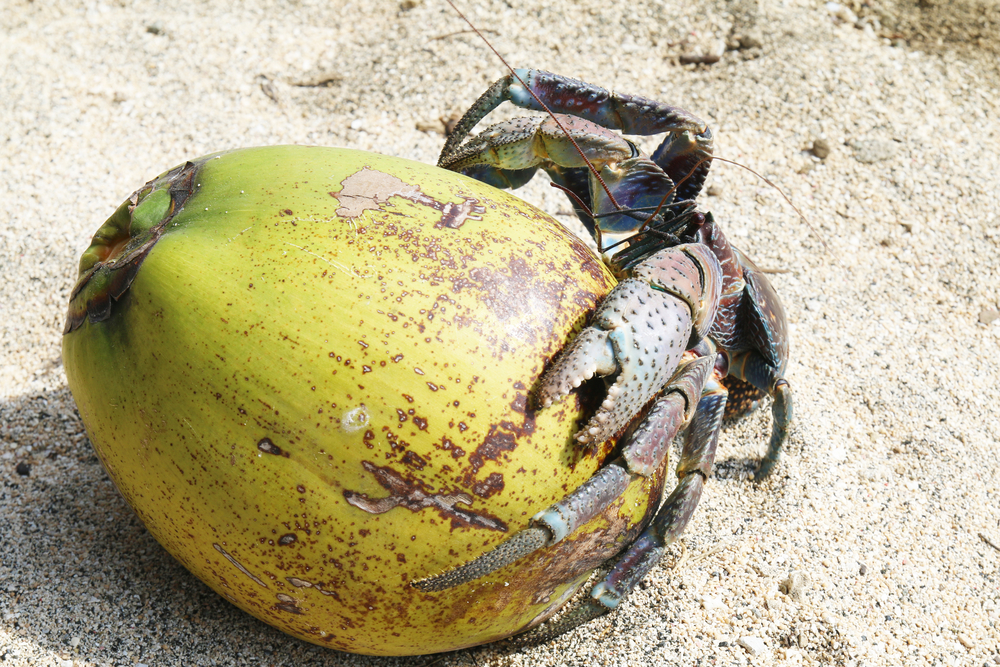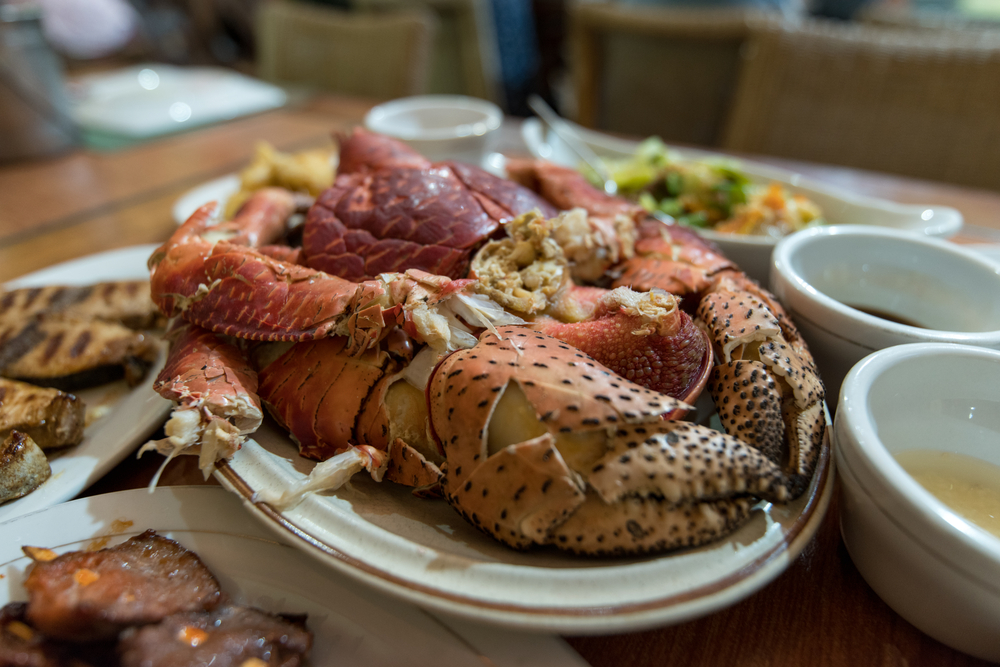The Coconut Crab Is an Icon of Batanes. That Has Proven Deadly for the Species

The coconut crab (Birgus latro) is a delicacy in Batanes. It is also the world’s largest invertebrate. To prepare it, locals would steam it in coconut milk and allow the crab’s natural flavors to soak the soup. It has a texture and flavor similar to lobster.
The crab got its name for its habit of prying open coconuts. Their pincers are so strong, they can tear up husks and break coconut shells with ease.
A Coconut Crab on a Coconut

In the Philippines, it is found in a number of places but has become so popular in Batanes, tourists would request locals for the dish. Unfortunately, coconut crabs are not prolific breeders, and they were almost wiped out in Batanes in the early ’90s when they were sold for only P100 a kilo. These days, they are no longer sold by weight but by individual. A single coconut crab is considered a luxury, ranging from P800 to P2,000 depending on its weight.
A Cooked Coconut Crab

Although the crab was declared vulnerable in 1983 by the IUCN and is protected locally by the Fisheries Administrative Order No. 208 (FAO 208), that has not stopped locals and tourists from eating the highly desired nocturnal arthropod.
“Coconut crabs were requested at restaurants, taken home as food souvenirs, and exported beyond the province,” reports Mongabay.
Although government officials are reminding locals to conserve and protect the species, travel sites promote the vanishing arthropod as a “must-have” when visiting the islands.
“A visit to Batanes will not be complete without tasting its famous coconut crab,” writes Escape Manila, which did not find it too appealing. “It was okay but I still prefer the sweet mud crabs of Surigao.”
Living up to 60 years, the crabs outlive many humans. But coconut crabs grow and breed very slowly. They only reach sexual maturity after five years. The crabs are generally terrestrial animals, but they still lay their eggs on the seashore. According to Mongabay, their larvae have a very low survival rate in the wild: They are preyed upon by birds, fish, and reptiles.
Locals in Batanes tried to culture the crabs but failed. “They propagate only in the wild as we see it. The only possible way to conserve the species is to establish a sanctuary, which we have presented to the local government units for their action,” Romulo Doplito of the BFAR tells Mongabay.
Coconut crabs are also found in other islands in the Philippines. They have been recorded in the islands in the province of Romblon, where they are also eaten as a delicacy.
Coconut crabs cannot cope with the demand for their meat. Its survival depends on what you choose to be on your dinner plate when visiting islands the arthropod inhabits.